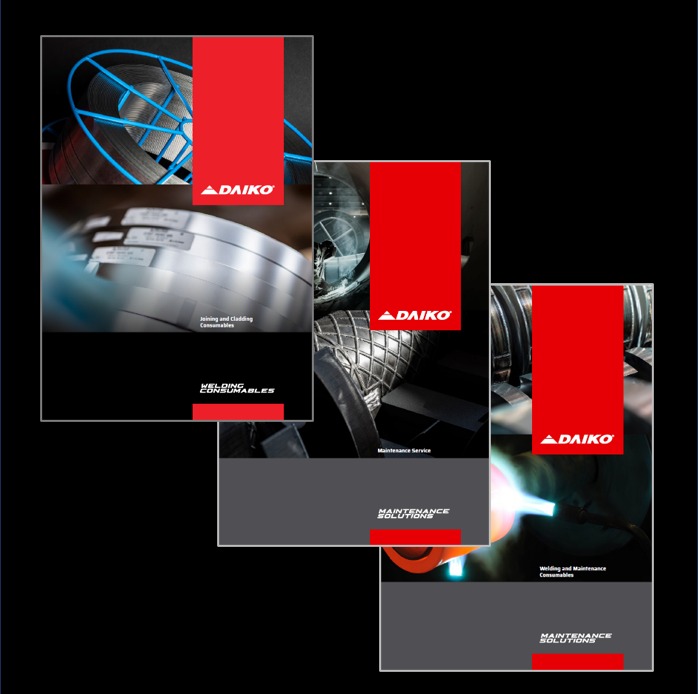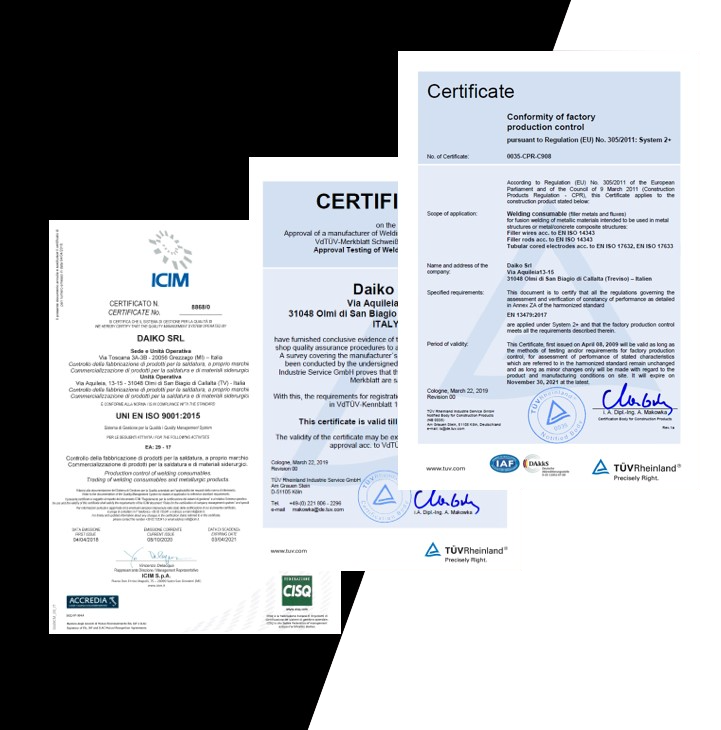- Home
- >
- All DAIKO products
- >
- NICKEL ALLOYS
- >
- 625W
625W
Application
This consumable closely resembles DAIKOW 625 (ERNiCrMo-3), albeit without the inclusion of Niobium (Nb). The fully austenitic weld metal it produces exhibits exceptional ductility, coupled with superior impact strength even in low-temperature conditions. This consumable is adept at mitigating hot cracking, ensuring a microstructure free of intermetallic phases like Niobium Nitride, and delivering excellent toughness. Its noteworthy characteristics extend to outstanding resistance against general, pitting, and intercrystalline corrosion, particularly in chloride-containing environments. This makes the consumable particularly well-suited for applications involving seawater and offshore environments. Additionally, it proves effective when components, such as pipes or fittings, need to undergo plastic deformation after welding. The scaling temperature for this consumable is approximately 1100°C. These combined attributes make it a versatile choice for a range of applications, offering reliable performance and durability.
Alloy Type
The nominal composition (wt. %) of filler metal of this classification is 64 Ni, 22 Cr, and 9
Mo (niobium free).
Microstructure
Fully austenitic with extra low
content of secondary phases.
Materials
Suitable for welding of Nickel-Chromium- Molybdenum alloys of similar composition as well as for cladding on low alloyed steels. Also suitable to weld superduplex, superaustenitic and cryogenic 9%Ni steels.
EN W.Nr.: 1.4547, 1.4529, 2.4856, 1.4539, 1.4410.
ASTM: A494 CW-6MC, 904L, A182 F53, A182 F55, SAF 2507, A890 Gr. 5A, A890 6A.
UNS: N08926, S31254, N06625, S32750, S32760, N08904, S32750.
PROPRIETARY: Inconel® 625, 601 (Special Metals), Incoloy® 800H, 825 (Special Metals), Nicrofer 6020hMo, 6022hMo (VDM), 254 SMO (Outokumpu), SAF 2507 (Sandvik).
EN W.Nr.: 1.4547, 1.4529, 2.4856, 1.4539, 1.4410.
ASTM: A494 CW-6MC, 904L, A182 F53, A182 F55, SAF 2507, A890 Gr. 5A, A890 6A.
UNS: N08926, S31254, N06625, S32750, S32760, N08904, S32750.
PROPRIETARY: Inconel® 625, 601 (Special Metals), Incoloy® 800H, 825 (Special Metals), Nicrofer 6020hMo, 6022hMo (VDM), 254 SMO (Outokumpu), SAF 2507 (Sandvik).
Welding & PWHT
Prior to initiating the welding or application of heat to any nickel-base alloy, it is paramount to ensure the base metal undergoes a comprehensive cleaning process. Substances such as oil, grease, paint, lubricants, marking pencils, temperature-indicating materials, threading compounds, and similar elements frequently contain sulfur or lead, presenting a potential risk of inducing cracking (embrittlement) in both the base metal and the weld metal if present during welding or heating. For welding activities involving fully austenitic and nickel base steels, meticulous care should be taken to minimize factors such as heat input, interpass temperature, and dilution with the parent metal. It is crucial to strictly adhere to a low heat input, capped at a maximum of 1.5 kJ/mm, and observe an interpass temperature limit of 100°C. Generally, post-weld heat treatment (PWHT) is not required; however, in specific cases, quench annealing at 1050°C may be necessary.
Products of the line 625W
| Product name | Process | AWS specifications | EN ISO specifications |


